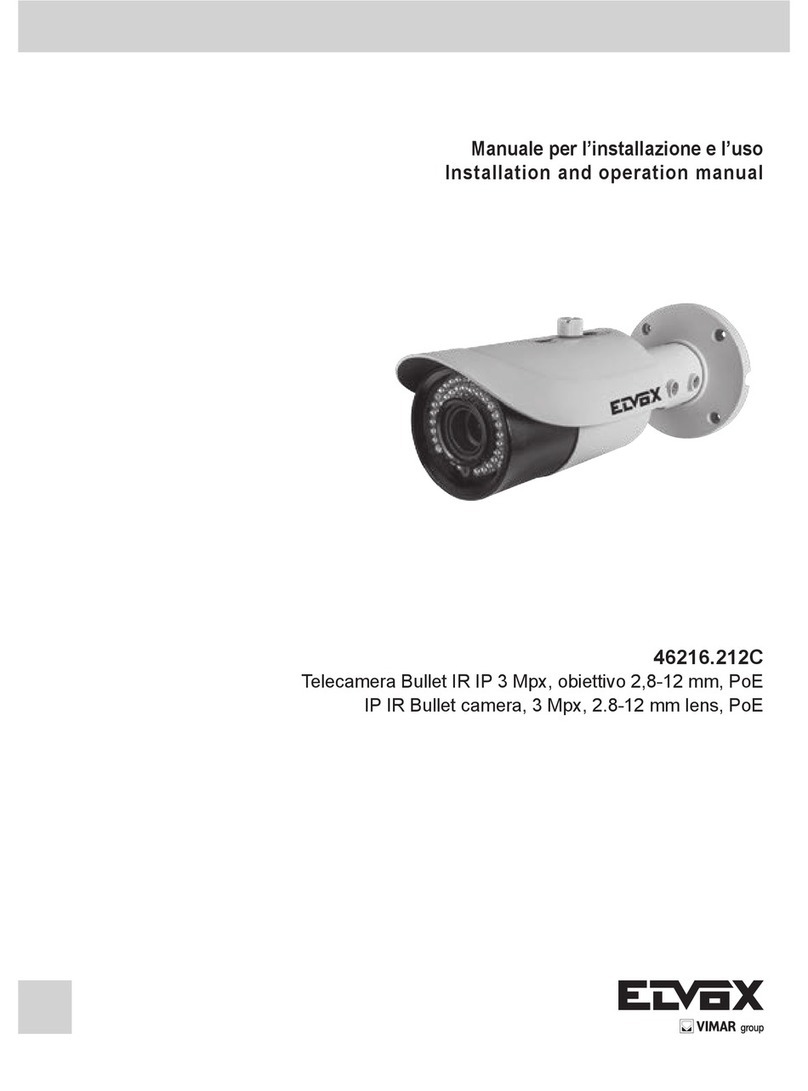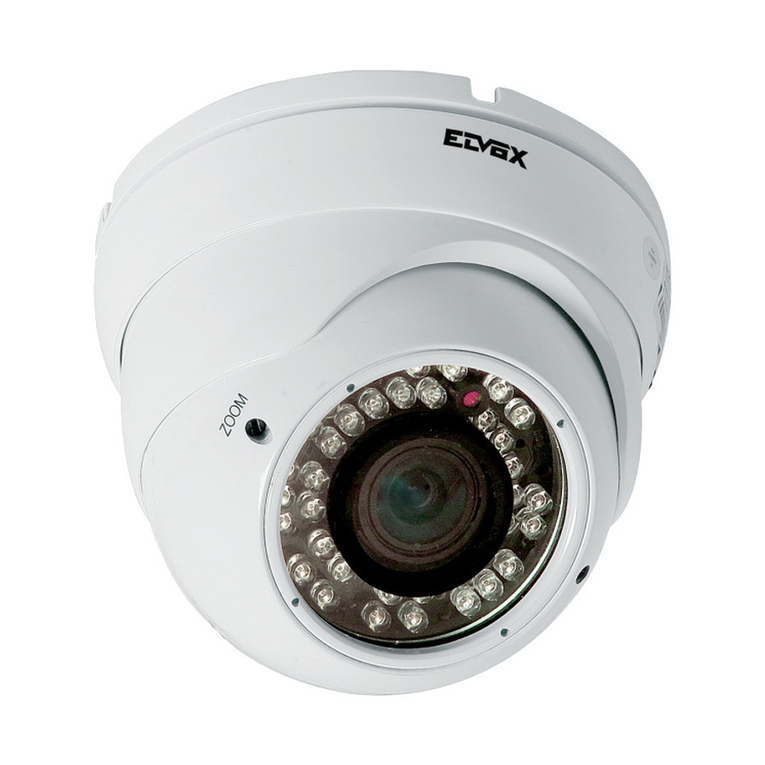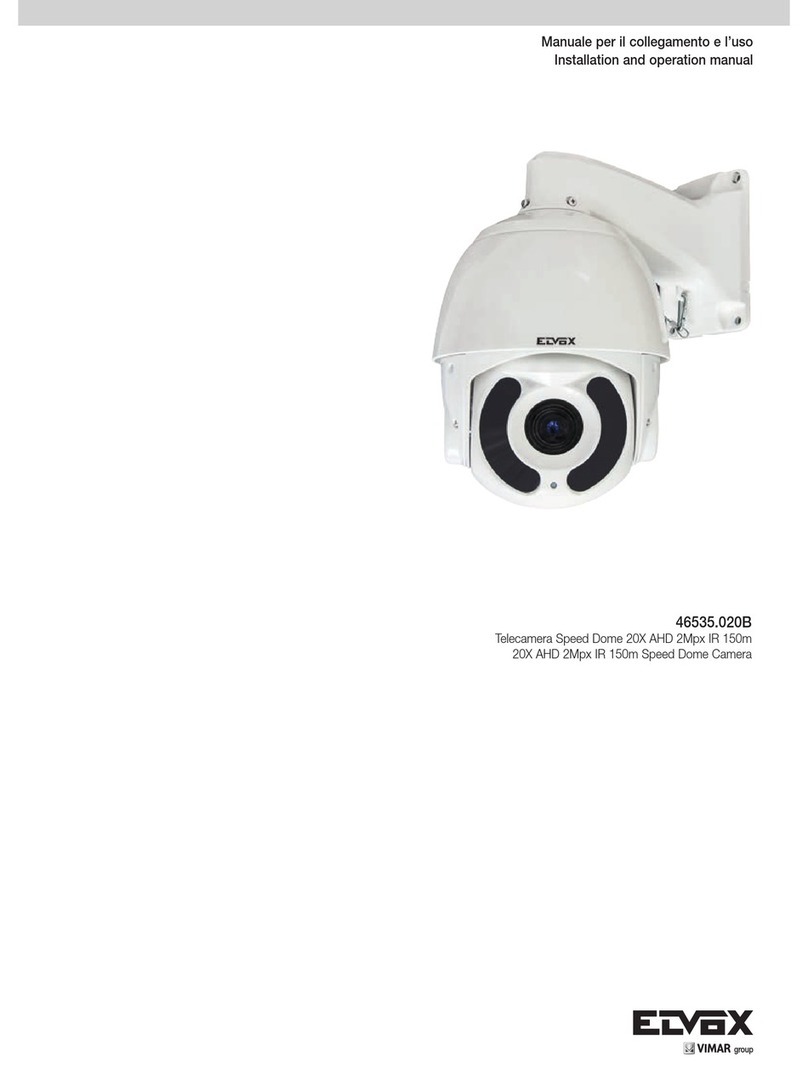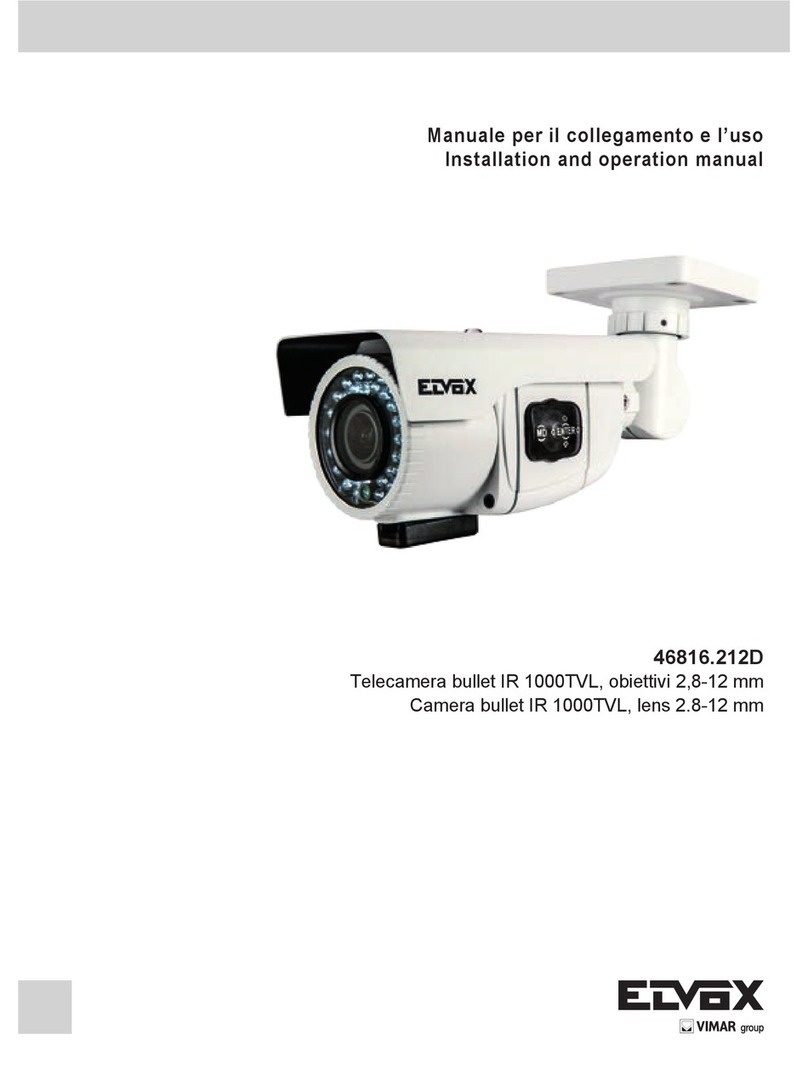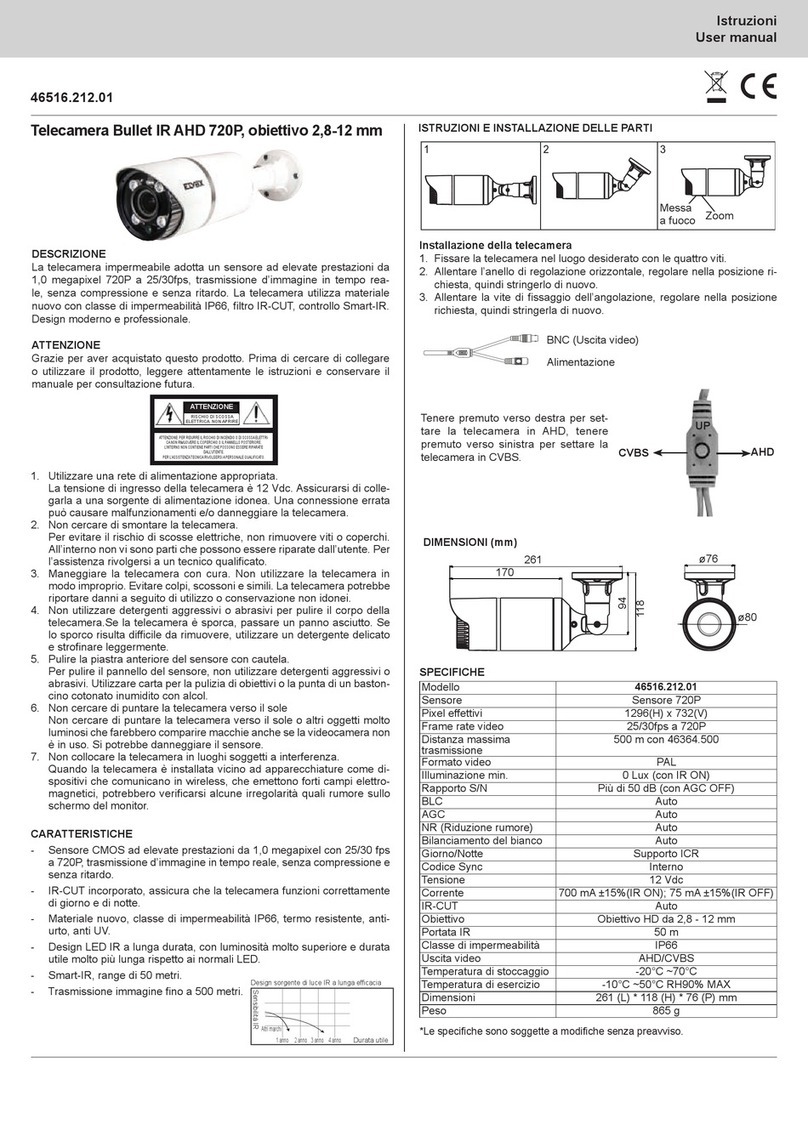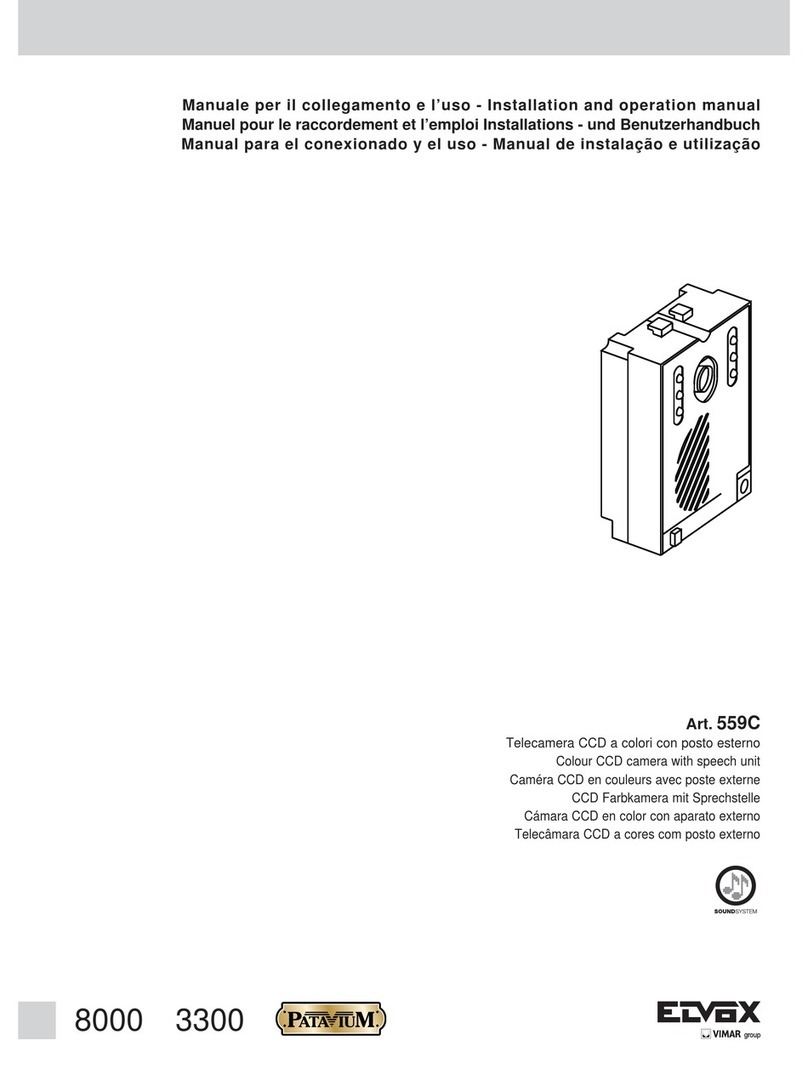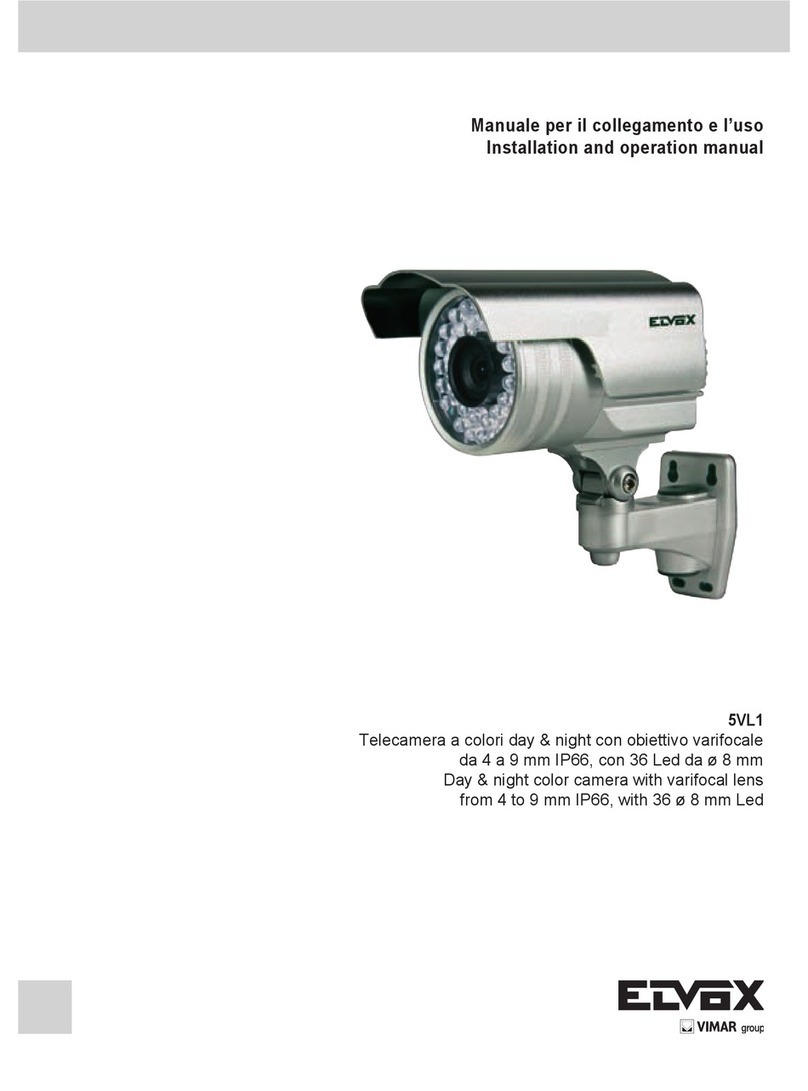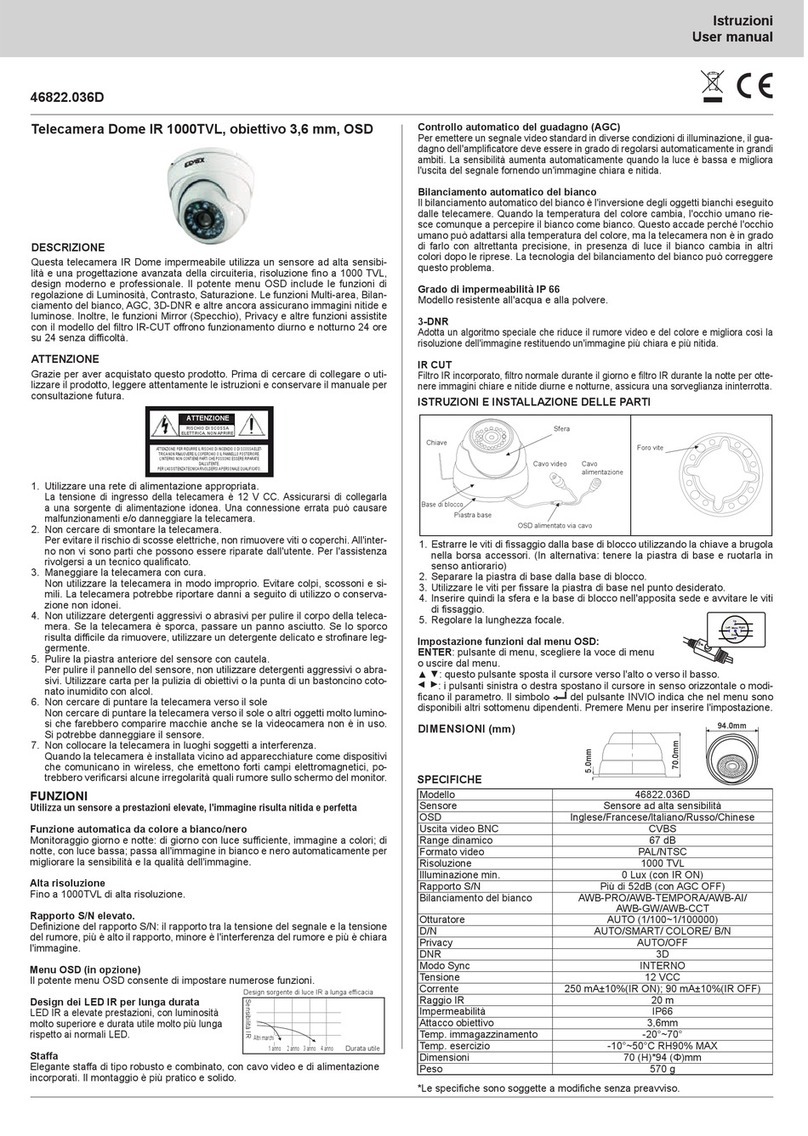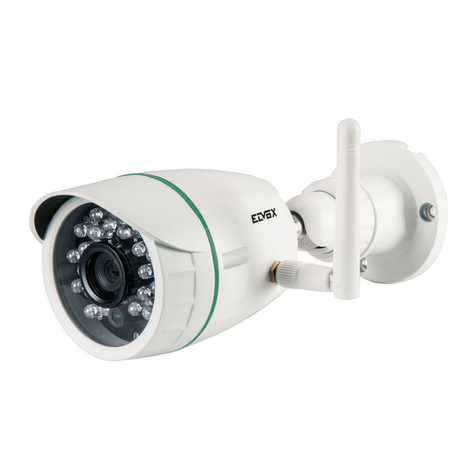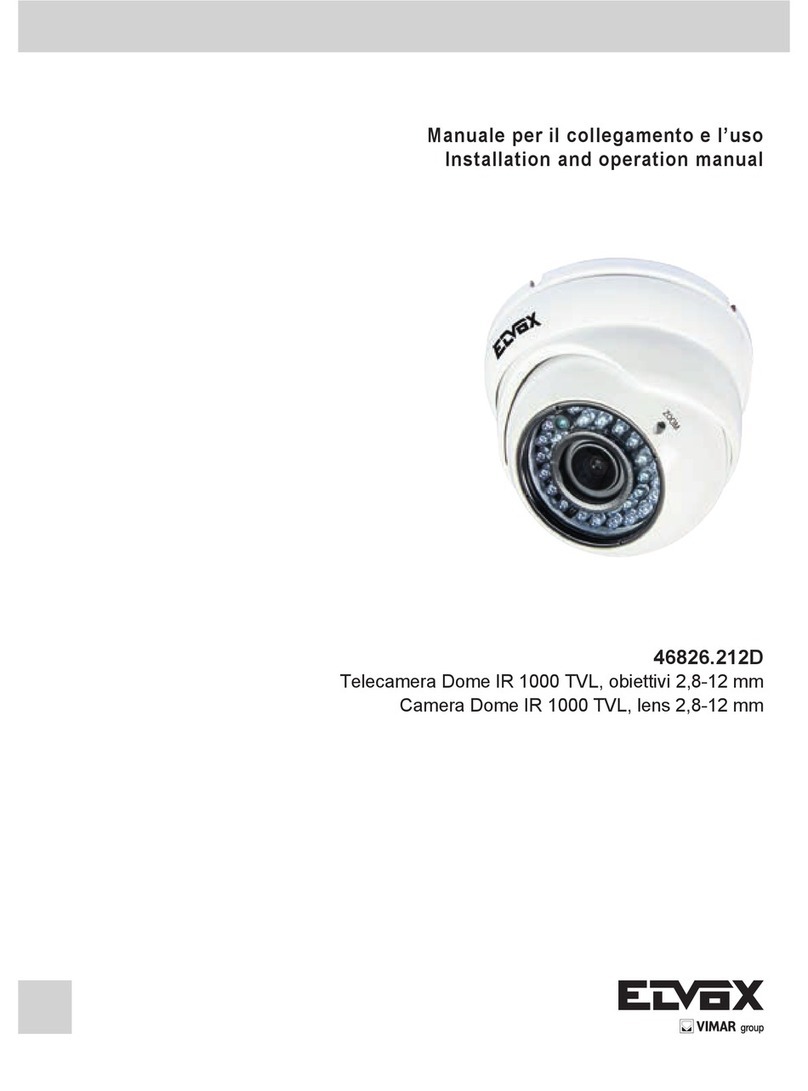F
10/32
Art. 68TC/K, 68TU/K
TEMPS DE FONCTIONNEMENT:
Le moniteur, la caméra, la gâche et les services auxiliaires doivent fonction-
ner selon les cycles d'intermittance suivants:
Cycle enclenchement moniteur et caméra
90 secondes (max) activé, 90 secondes désactivé
Cycle gâche
1 seconde activé (max), 5 secondes désactivé
Cycle services auxiliaires
90 secondes activé (max), 90 secondes déactivé
Bornes de la caméra Art. 68TU/K, 68TC/K
CL, M) Raccordement pour relais Art. 170/101 (pour éventuel allumage
d'un éclairage de la zone de filmage) pour projecteur éclairage sup-
plémentaire. Il est activé pour la période d'enclenchement de la ca-
méra.
CA,M) Raccordement pour poussoir ouvre-porte supplémentaire.
PA, M) Raccordement pour senseur " porte ouverte ", le senseur doit avoir
un contact normalement ouverte qui se ferme lorsque la porte est
ouverte.
B1, B2) Ligne BUS
S-, S+) Sortie pour alimentation gâche électrique (12V ).
*
La plaque fournit un pic de courant IT> 1A pendant 10 mS qui est suivi
d'un courant de maintien IM= 200mA pendant toute la durée de la com-
mande serrure.
*
CAMERA Art. 68TU/K, 68TC/K
Caméras couleurs (Art. 68TC/K) et B/N (Art. 68TU/K) à utiliser avec plaque
série 1300 (Art. 13K1) pour installations videokits 2 fils.
Caracteristiques techniques de la camera (ART. 68TU/K)
- Senseur CCD 1/3" couleurs
- Objectif à diaphragme automatique 3,7mm F4,0 focus fixe
- Contrôle automatique de la luminosité
- Pivotement manuel sur l’axe vertical et horizontal
- Signal vidéo standard PAL type G, 625 lignes, 50 images
- Température de fonctionnement -5° + 45° C
- Éclairage sujet au moyen de LEDs à lumière blanche
- Éclairage porte-noms au moyen de LEDs
- Poste externe audio incorporé
- Boîte de raccordement amovible
- Poussoir appel moniteur
- Sortie pour commande projecteur éclairage au moyen de relais Art.
170/101.
- Commande ouvre-porte local depuis plaque de rue.
- Temps activation gâche réglable (de 0 à 30 secondes).
- Alimentation donnée par le bus.
- Dimensions maximum externes: 80x120x25 mm.
Caracteristiques techniques de la camera (ART. 68TC/K)
- Senseur CCD 1/3” B/N
- Objectif 3,7 mm F4,0 avec focus fixe
- Signal vidéo standard PAL type G, 625 lignes, 50 images
- Pivotement manuel sur l’axe vertical et horizontal
- Dimensiones reales de l’image: 512(H)x582(V) PAL
- Resolution horizontale: 330 Lignes TV ou plus grande
- Diaphragme électronique (shutter).
- Température de fonctionnement - 5° + 45° C
- Niveau d’éclairage minimum 0,1 lux.
- Éclairage sujet au moyen de LEDs à l'infrarouge
- Éclairage porte-noms au moyen de LEDs
- Poste externe audio incorporé
- Boîte de raccordement amovible
- Poussoir appel moniteur
- Sortie pour commande projecteur éclairage au moyen de relais Art.
170/101.
- Commande ouvre-porte local depuis plaque de rue.
- Temps activation gâche réglable (de 0 à 30 secondes).
- Alimentation donnée par le bus.
- Dimensions maximum externes : 80x120x25 mm.
Réglages caméra (Art. 68TU/K, 68TC/K)
À l'arrière de la caméra il y a le réglages suivants:
Temps activation
gâche
Temps activation
camera
Volume
interne
Volume
externe
1ère Caméra
IT=0
(Default)
2ème Caméra
IT=1
Code d’identification PLAQUE DE RUE/CAMERA
Lorsque dans une intallation il y a plusieurs caméras/plaques de rue il faut
mieux identifier la camera avec un code différent des autres. Le code
d’indentification est assigné au moyen de l’insertion des pontets dans les
contacts selon la figure.
Fig.12
Microphone
1er bouton à utiliser
LED d'éclairage éti-
quette porte-noms
Fig.13
2ème bouton-poussoir
LED d'éclairage éti-
quette porte-noms
LED CH2
12V
